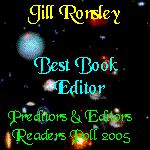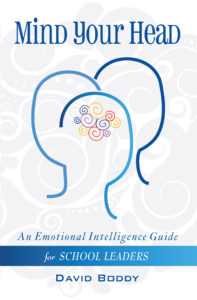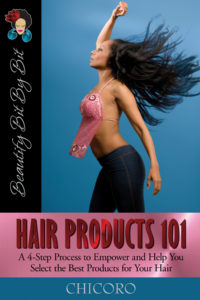Editing
Editing and Proofreading
What We Deliver
We recognize the creativity, research and time that writers put into their manuscripts. Good writing conveys a message or story clearly. It gives pleasure to readers and impresses reviewers.
When we edit, our goal is to strengthen your writing while maintaining your authorial voice. We want your finished work to shine.
The most comprehensive edit is a substantive edit, which includes essential modifications and corrections. At the end of the project, the text is proofread to ensure that no errors or typos remain.
THE EDITING PROCESS: We refine your writing so that errors of grammar, punctuation and syntax are corrected, which might otherwise attract the reader’s attention more than your message does. We check for wordiness and redundancy, and we verify that the writing style is consistent. When the editing is done, your manuscript will shine.
THE FINAL FILES: We send you two finished Word files. One shows the changes so that you can compare every detail of your original with the edited version. The other is the clean edit, which is easy to read. Our work includes helpful comments with suggestions, queries and explanations.

Best Editor Award out of 105 nominees, Preditors & Editors Readers Poll
“I turned to Jill Ronsley to edit my book because of her considerable experience and deep understanding of human values and the educational process. The decision was the wisest I have taken. She not only examined the text with a sharp but empathetic intellect, but she also took her scalpel to my manuscript, eliminating the unnecessary and illuminating the key points I was trying to make. The result is a far more readable book for buyers and a far more satisfying product for the author. I cannot recommend Jill highly enough.”
—David Boddy, author of Mind Their Hearts

Levels of Editing and Proofreading
Some manuscripts need a light edit, while others require a deep review. Proofreading is done when the editing is complete.
Substantive editing eliminates wordiness, checks logic and syntax, flags omissions and refines the writing. It eliminates redundancy and clarifies the language where needed. Fact checking is done if need be for both nonfiction and fiction.
Standard editing corrects grammar, punctuation and spelling errors.
Proofreading is is when the author has reviewed the edit and finalized the manuscript. It entails a final check for typos and any remaining issues. The final proofreading is done after the book is designed and typeset, just before the book is published.
Editing fiction requires special considerations of several elements: structure, character development and pace; balance of dialogue, action and narrative; plot inconsistencies, logic and overall cohesion.
If an author requires even more in-depth assistance, we provide developmental editing, rewriting and writing services.
Developmental editing entails a review of the work with attention to the structure and content. Suggestions and rewriting are provided based on the evaluation of various elements: capturing the attention of the reader; gaps in the content; sequence of chapters and paragraphs; beginning, middle and end; and logic.
Writing and Rewriting entail the creation of new text based on the requirements of the author. They may include checking facts for accuracy, research and recasting or writing new material. Writing and rewriting are often of value to those whose time is limited, as well as to non-native English speakers.
“Jill Ronsley brought the beauty of my book to fruition. Jill understood the essence of the message immediately. Most important, she champions, preserves and eloquently illuminates the precious ‘voice’ of the author. I wanted to claim her revisions and corrections as my own. If there were such a person as a Book Whisperer, it would be Jill.”
—Chicoro, author of Hair Products 101 and Grow It! (published in English and French)

Editing Styles
American, British and Canadian
We use The Chicago Manual of Style for American texts. For British manuscripts we use New Hart’s Rules and The Oxford Style Manual. For the fine points of Canadian English we refer to The Canadian Style. However, we readily adapt to the preferred or in-house style of any publishing house or organization and to the author’s style. If you are not sure about which style is best for your book, we can help you decide.
“Jill brings an impressive range of sensibilities to the development-edit process. Her astute suggestions not only helped to improve the sequencing and usability of the content, as I had hoped, but they also helped to improve the book’s marketability and the reader’s perception of the author (me!). Her queries were terrific, her suggestions were outstanding, and her explanations of them were illuminating. In short, she is on speed dial for my next project!”
─Eric Armstrong, author of Comprehensive Keys to the Green: Unlock Your Putting Potential in the Game of Golf

“I first learned of Jill Ronsley’s services through the recommendation of another author. Her services have proven invaluable, not just for the specific books she worked on, but also because of how much I learned from her editing, her remarks and her words of encouragement. The education I have gained has made me a better writer going forward.”
—Darren Simon, author of The Last Guardian series
“Editing involves carefully reviewing material before it is published and suggesting or making changes to correct or improve it. The goal of editing is to ensure that the material is consistent and correct and that its content, language, style, and design suit its purpose and meet the needs of its audience.
“The editor is an intermediary who must skilfully and tactfully balance the interests of those who have commissioned the work and developed the material and, ultimately, the intended audience(s).…
“Editors are part of a larger publishing process, whether for print or electronic media.”
—”Professional Editorial Standards,” Editors’ Association of Canada, 2016
